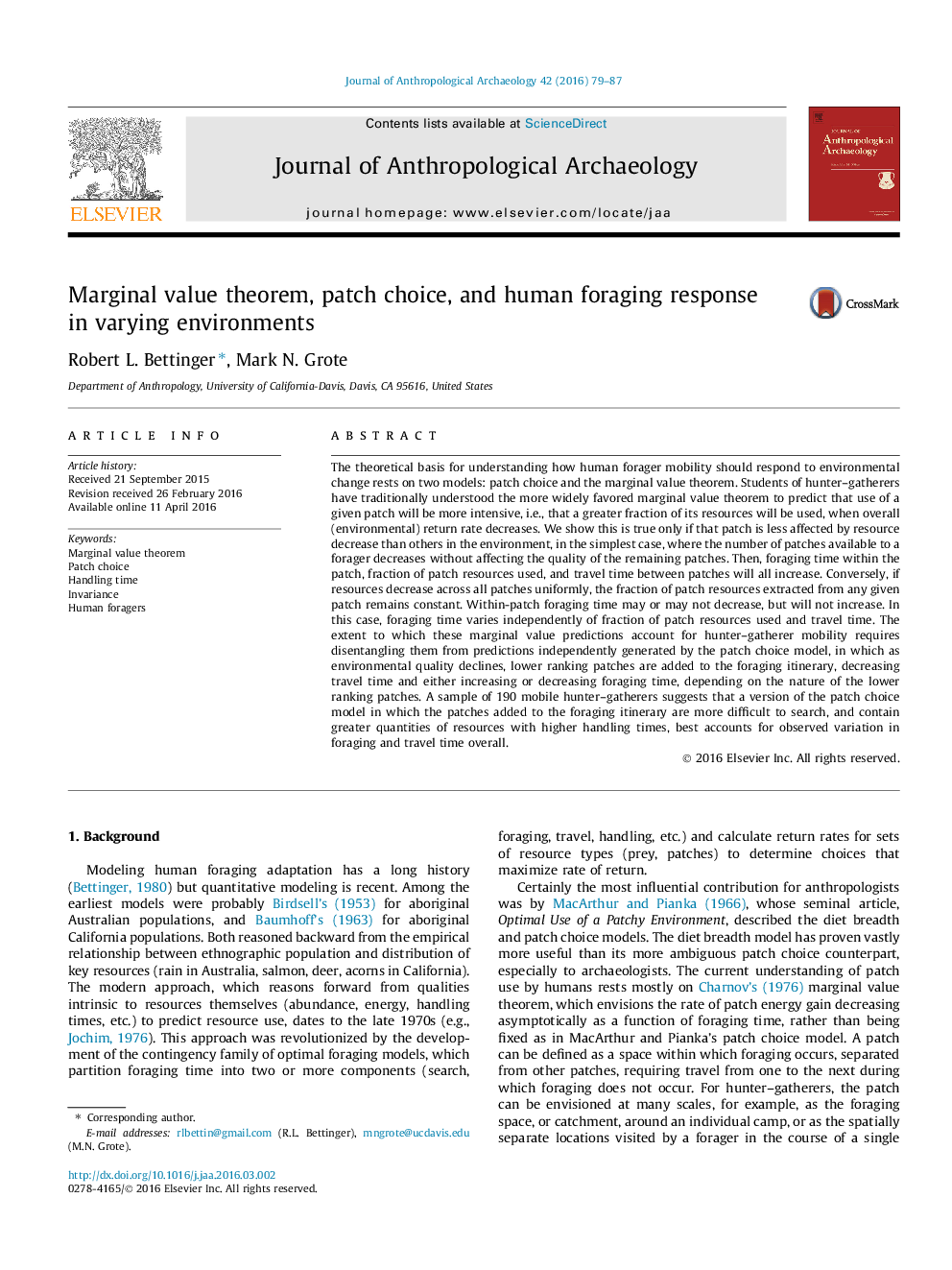| کد مقاله | کد نشریه | سال انتشار | مقاله انگلیسی | نسخه تمام متن |
|---|---|---|---|---|
| 1034860 | 1483848 | 2016 | 9 صفحه PDF | دانلود رایگان |
• The traditional understanding of the marginal value theorem is incomplete.
• We show intensity of patch use is invariant to patch-level changes in resources.
• The marginal value theorem most suited cases where there is just one patch type.
• The patch choice model better accounts for variation in hunter–gatherer foraging.
The theoretical basis for understanding how human forager mobility should respond to environmental change rests on two models: patch choice and the marginal value theorem. Students of hunter–gatherers have traditionally understood the more widely favored marginal value theorem to predict that use of a given patch will be more intensive, i.e., that a greater fraction of its resources will be used, when overall (environmental) return rate decreases. We show this is true only if that patch is less affected by resource decrease than others in the environment, in the simplest case, where the number of patches available to a forager decreases without affecting the quality of the remaining patches. Then, foraging time within the patch, fraction of patch resources used, and travel time between patches will all increase. Conversely, if resources decrease across all patches uniformly, the fraction of patch resources extracted from any given patch remains constant. Within-patch foraging time may or may not decrease, but will not increase. In this case, foraging time varies independently of fraction of patch resources used and travel time. The extent to which these marginal value predictions account for hunter–gatherer mobility requires disentangling them from predictions independently generated by the patch choice model, in which as environmental quality declines, lower ranking patches are added to the foraging itinerary, decreasing travel time and either increasing or decreasing foraging time, depending on the nature of the lower ranking patches. A sample of 190 mobile hunter–gatherers suggests that a version of the patch choice model in which the patches added to the foraging itinerary are more difficult to search, and contain greater quantities of resources with higher handling times, best accounts for observed variation in foraging and travel time overall.
Journal: Journal of Anthropological Archaeology - Volume 42, June 2016, Pages 79–87
